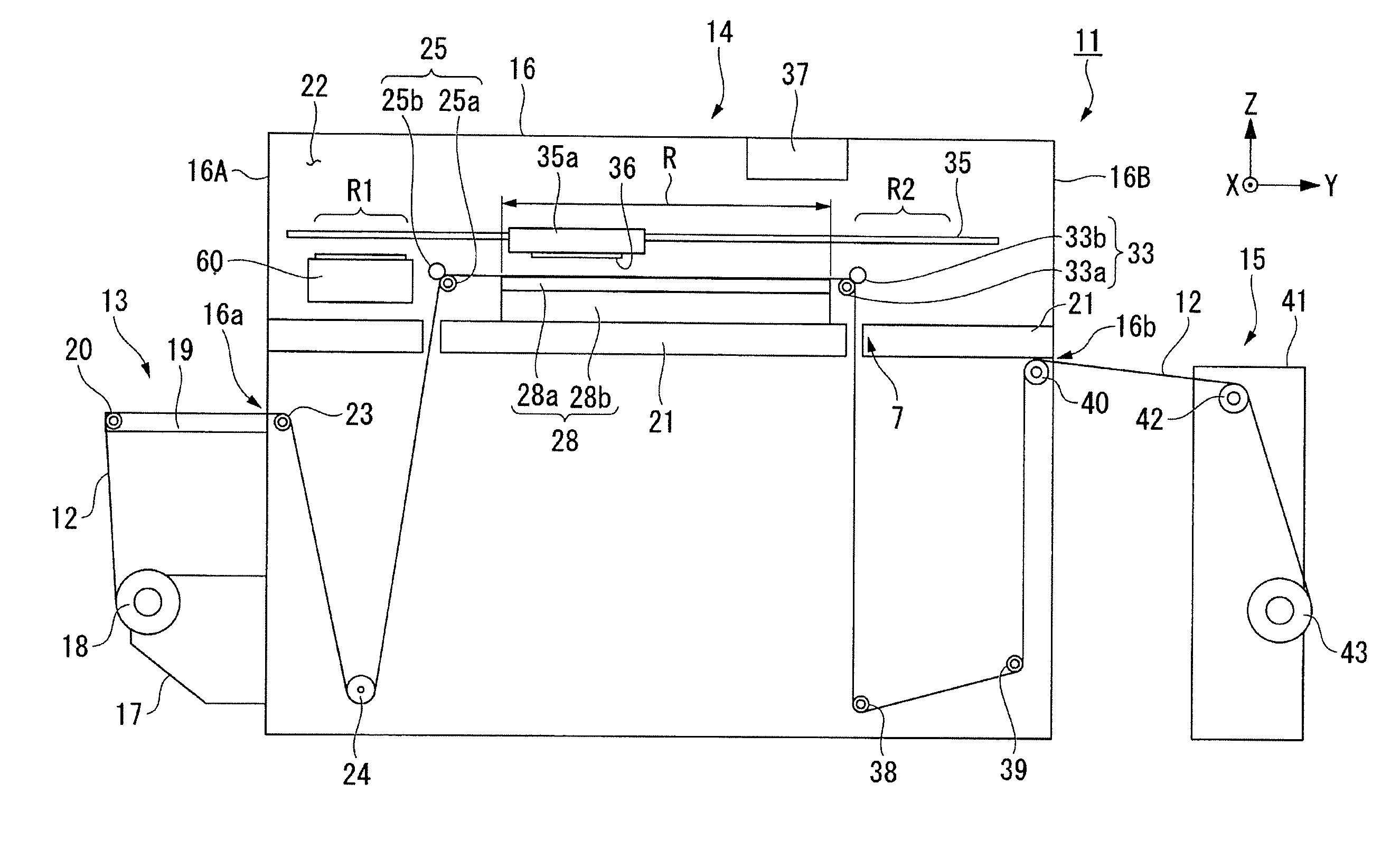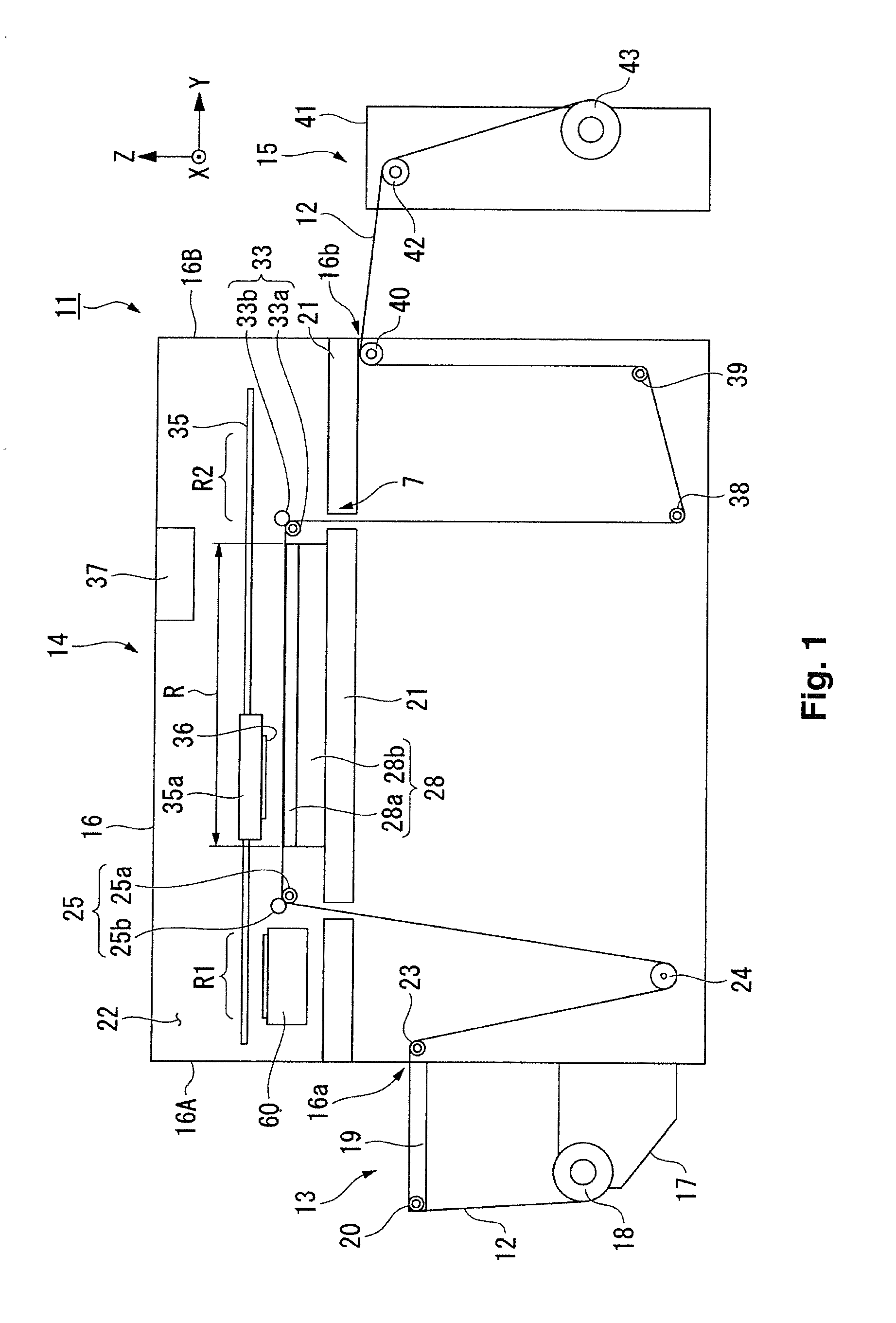Recording device
a recording device and recording medium technology, applied in the direction of printing, other printing apparatus, etc., can solve the problems of excessive load on the recording medium, interference with the device, and flexing of the recording medium, so as to achieve the effect of higher accuracy
- Summary
- Abstract
- Description
- Claims
- Application Information
AI Technical Summary
Benefits of technology
Problems solved by technology
Method used
Image
Examples
Embodiment Construction
[0032]Embodiments of the recording device are described hereinbelow with reference to the drawings.
[0033]The scope of the present invention is not limited to the embodiments below, and modifications can be made as desired within the scope of the technical concepts of the present invention. The scale, number, and other parameters in the actual structure and each structure may be different in the drawings in order to facilitate understanding of each configuration.
[0034]FIG. 1 is a view showing the printer of the present embodiment. FIG. 2 is a plan view of the print area used for printing in the printer. FIG. 3 is a lateral sectional view of the platen.
[0035]A printer 11 (recording device) uses as the print method an inkjet method for jetting a fluid from a plurality of recording heads (fluid jet head) onto a continuous paper 12, carries out a printing process while sequentially feeding out the long continuous paper (recording medium) 12 wound in the form of a roll, and then winds the...
PUM
 Login to View More
Login to View More Abstract
Description
Claims
Application Information
 Login to View More
Login to View More - R&D
- Intellectual Property
- Life Sciences
- Materials
- Tech Scout
- Unparalleled Data Quality
- Higher Quality Content
- 60% Fewer Hallucinations
Browse by: Latest US Patents, China's latest patents, Technical Efficacy Thesaurus, Application Domain, Technology Topic, Popular Technical Reports.
© 2025 PatSnap. All rights reserved.Legal|Privacy policy|Modern Slavery Act Transparency Statement|Sitemap|About US| Contact US: help@patsnap.com



